

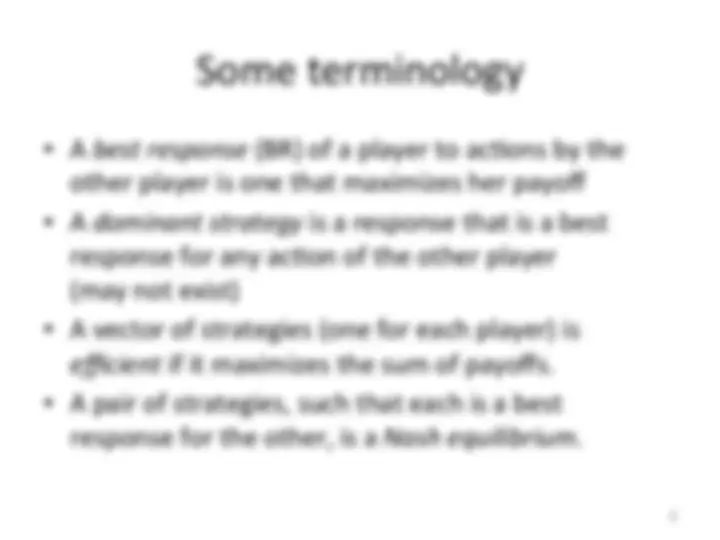



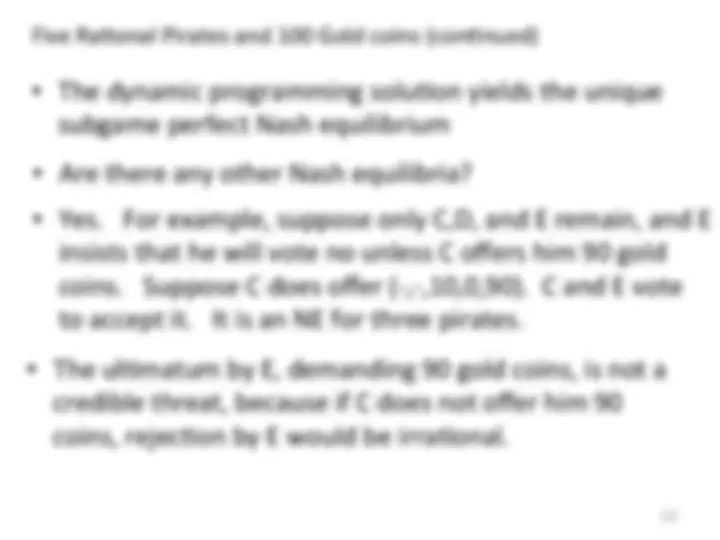

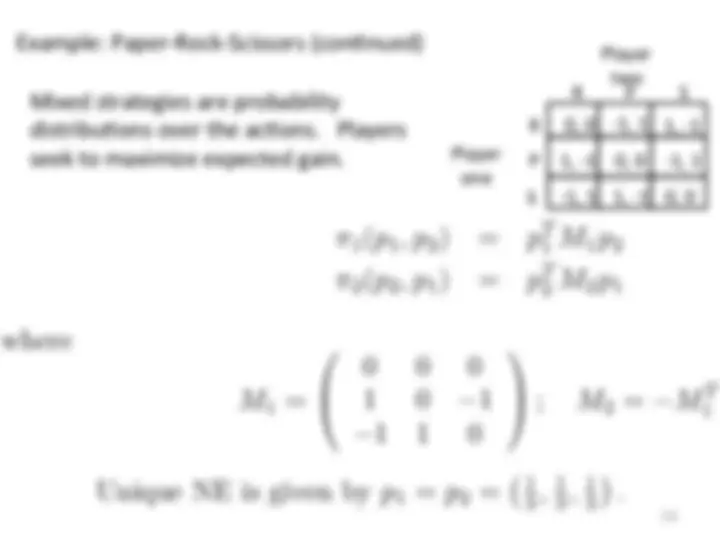
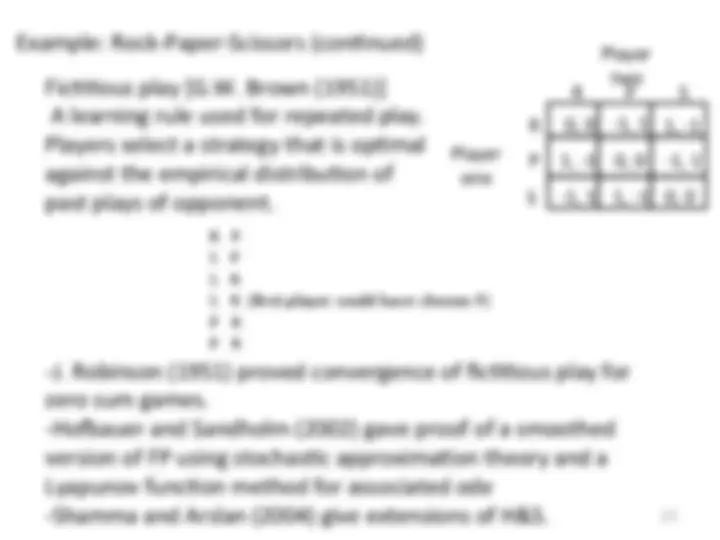

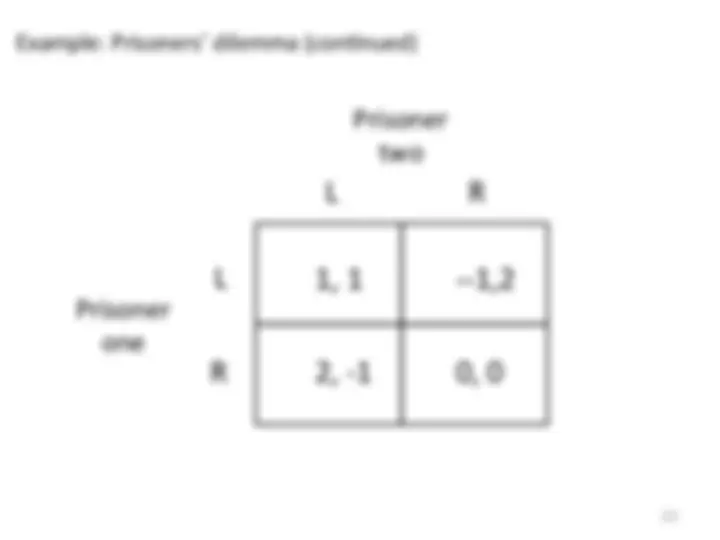
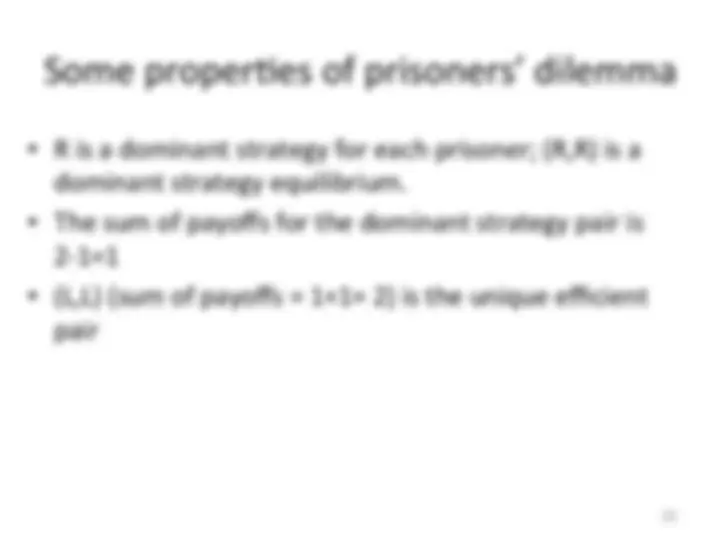
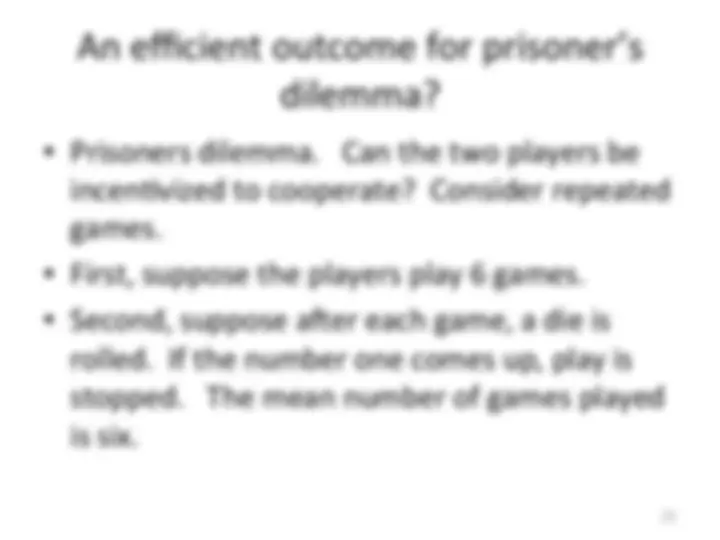

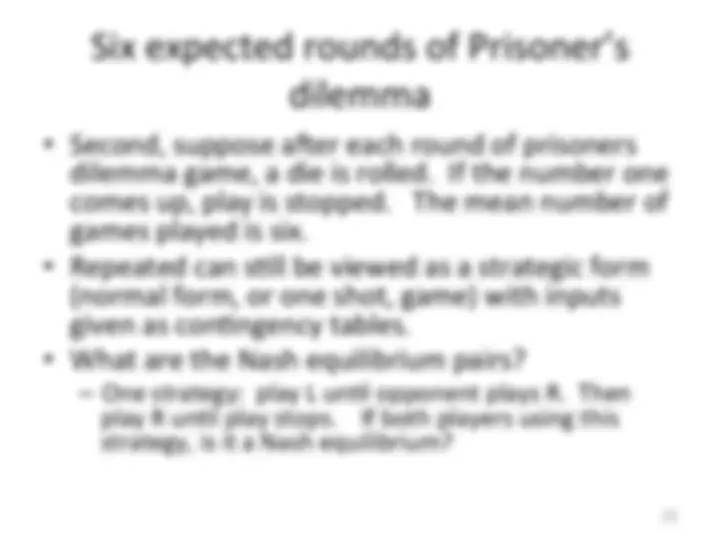



Study with the several resources on Docsity

Earn points by helping other students or get them with a premium plan


Prepare for your exams
Study with the several resources on Docsity

Earn points to download
Earn points by helping other students or get them with a premium plan
Community
Ask the community for help and clear up your study doubts
Discover the best universities in your country according to Docsity users
Free resources
Download our free guides on studying techniques, anxiety management strategies, and thesis advice from Docsity tutors
Introduction to game Theory in describes startegic forms game in given five examples like: second price auction, congestion games, five rational pirates 100 gold coins, rock-scissors papers and prisoner's dilemma.
Typology: Slides
1 / 24

This page cannot be seen from the preview
Don't miss anything!

















The dominant strategy equilibrium for second price auc)on is efficient. Doesn’t depend on Alice’s bid
7 A conges)on game (con)nued) Suppose ini)al routes are assigned arbitrarily. Then players, one at a )me, consider changing their route to a best response. payo↵ of player i: ⇡i(ri, r�i) =
l 2 ri dl(nl) Iterated best response leads to monotone decreasing values of the poten)al func)on, with a strict decrease in poten)al func)on whenever a player changes route. Converges to a Nash equilibrium. Few games, however, admit a poten)al. Define the potential function �(r 1 ,... , rn) =
l 2 L Dl(nl) where Dl(nl) =
nl k= dl(k). Then ⇡i(eri, r�i) � ⇡i(ri, r�i) = �(eri, r�i) � �(ri, r�i)
Example 3: Five Ra)onal Pirates and 100 Gold coins
Five Ra)onal Pirates and 100 Gold coins (con)nued)
Example: Paper-‐Rock-‐Scissors (con)nued) R P 0, 0 -‐1, 1 1, -‐ Player one Player two S P S R 0, 0 0, 0 1, -‐ 1, -‐ -‐1, 1 -‐1, 1 No. Keeps cycling. Moreover, there is no NE in pure strategies. Does iterated best response converge? Mixed strategies are probability distribu)ons over the ac)ons. Players seek to maximize expected gain.
Example: Paper-‐Rock-‐Scissors (con)nued) R P 0, 0 -‐1, 1 1, -‐ Player one Player two S P S R 0, 0 0, 0 1, -‐ 1, -‐ -‐1, 1 -‐1, 1 Mixed strategies are probability distribu)ons over the ac)ons. Players seek to maximize expected gain.
1 3
1 3
1 3
T 1
T 2
T 1
16 �(x) = 1 Z (e x 1 , e x 2 ,... , e xn ) �i(p�i) = �(Mip�i/⌧ ) �i(p�i) is BR for cost functions with entropy terms: U 1 (p 1 , p 2 ) = p T 1 M^1 p^2 +^ ⌧^ H(p^1 ) U 2 (p 2 , p 1 ) = p T 2 M^2 p^1 +^ ⌧^ H(p^2 ) The mollified best response dynamics becomes q ˙ 1 = � 1 (q 2 ) � q 1 q ˙ 2 = � 2 (q 1 ) � q 2 Let V 1 (q 1 , q 2 ) = maxs U 1 (s, q 2 ) � U (q 1 , q 2 ) and V 2 (q 1 , q 2 ) = maxs U 1 (q 1 , s) � U (q 1 , q 2 ). Find dV 1 (q 1 , q 2 ) dt �V 1 (q 1 , q 2 ) + ˙q T 1 M^1 q˙^2 dV 2 (q 1 , q 2 ) dt �V 2 (q 1 , q 2 ) + ˙q T 2 M 2 q˙ 1 So V 1 (q 1 , q 2 ) + V 2 (q 1 , q 2 ) is a Lyapunov function for proving global convergence.
Example: Rock-‐Paper-‐Scissors (con)nued) R P 0, 0 0, 1 1, 0 Player one Player two S P S R 0, 0 0, 0 1, 0 1, 0, 1 0, 1 A varia)on of Rock-‐Paper-‐Scissors is the nonzero some version. Fic))ous play does not converge (Shapley): R S R P R P S P S P S P S P S R S R S R S R S R S R
Example: Prisoners’ dilemma (con)nued) L L R R 2, -‐1 0, 0 1, 1 -‐-‐1,
Some proper)es of prisoners’ dilemma